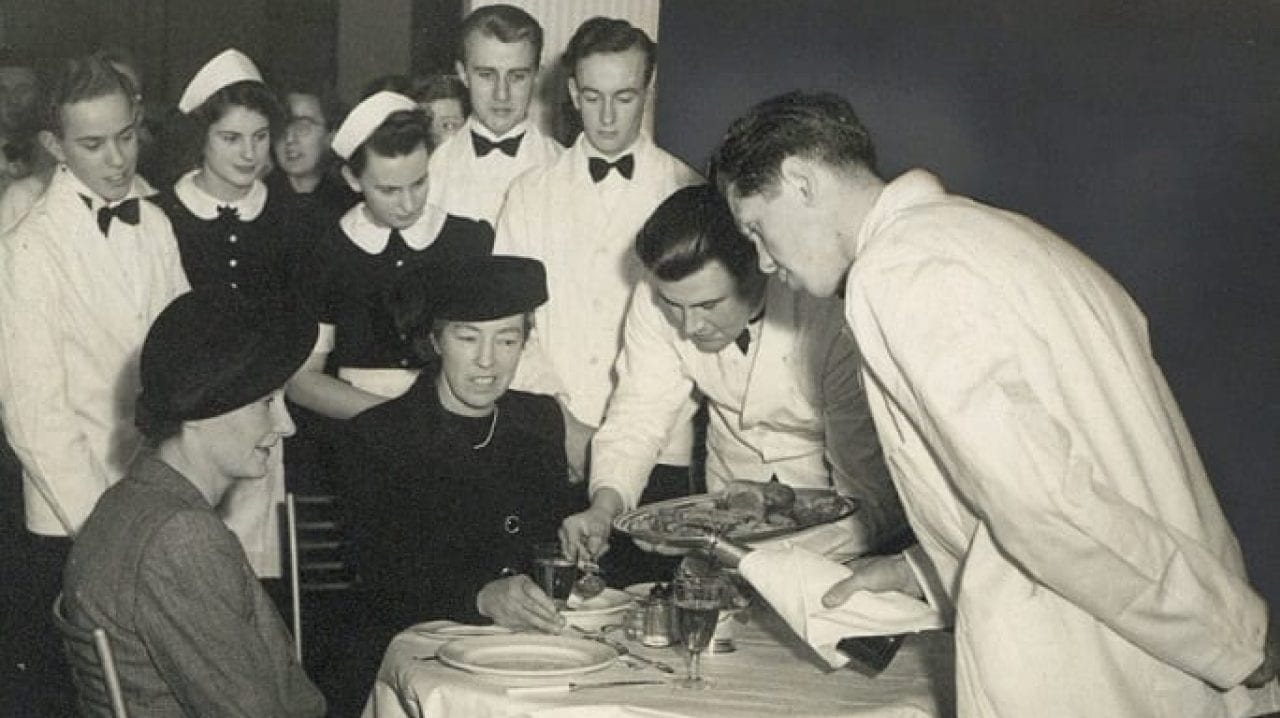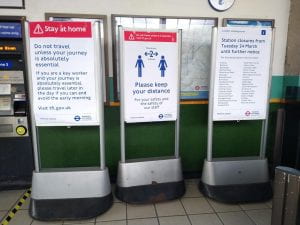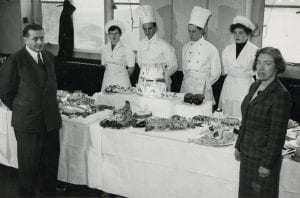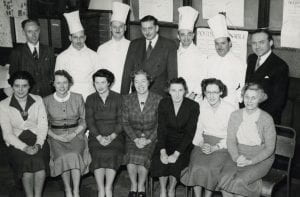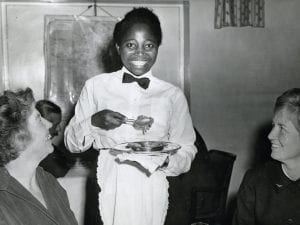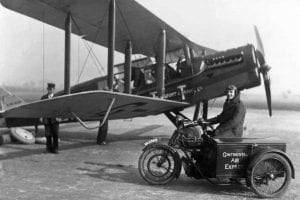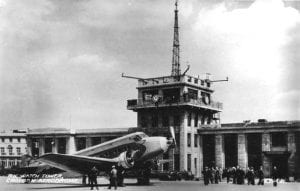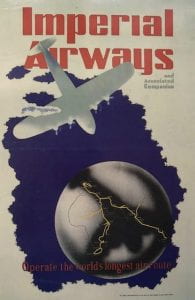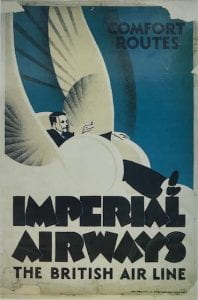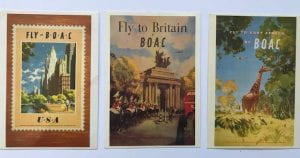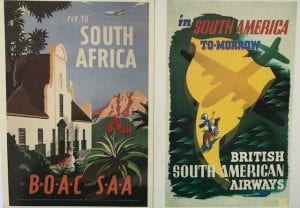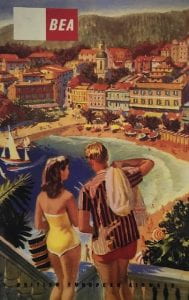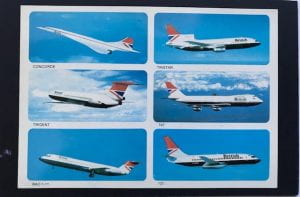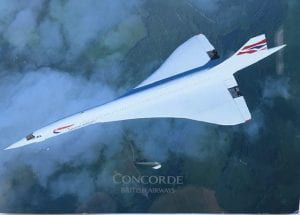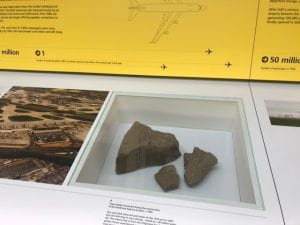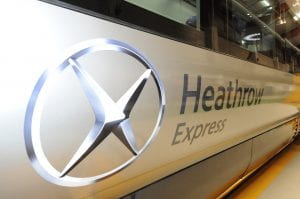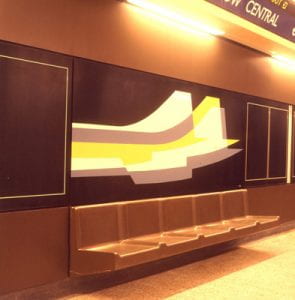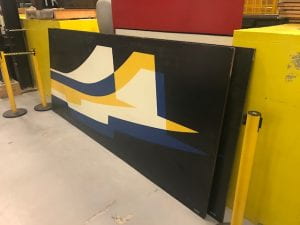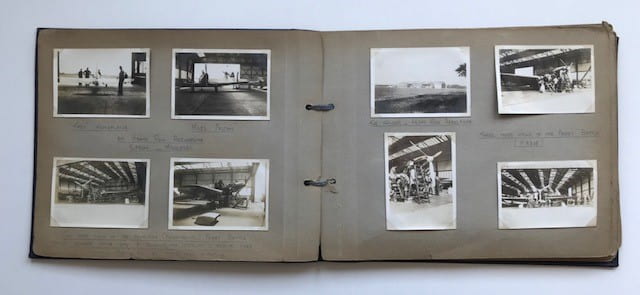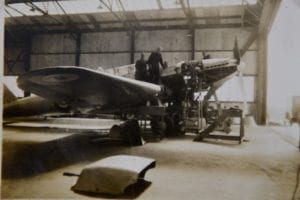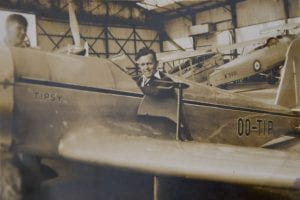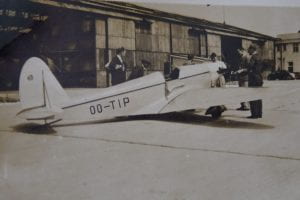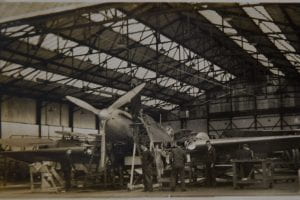Those who have had the opportunity to visit UWL’s onsite exhibition Heathrow: The Journey may recall hearing a sound clip of Neville Chamberlain’s famous declaration of war in 1939. Chamberlain flew via Heston Aerodrome, a short distance from Heathrow Airport, to Munich for the infamous peace talks with German Chancellor Adolf Hitler in September of 1938. The end of the Second World War played an important part in the establishment of London Airport (later known as Heathrow Airport) and in the provision of the initial facilities and equipment. For example, the initial terminal buildings were former army tents used by troops as accommodation during the conflict.
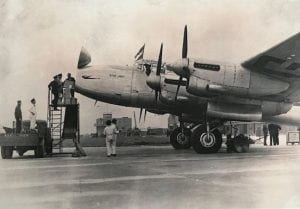
Starlight: first aircraft to fly from London Airport, 1/1/1946 (CC Heathrow Archive/Graham Bridges/Cliff Alabaster/British Airways Heritage Centre)
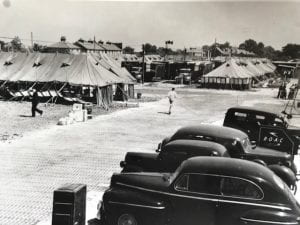
London Airport showing early terminal tents, 1946
The first aircraft which took off from London Airport were often converted bombers previously used during the war. A converted Lancaster bomber ‘Starlight’ took off on 1st January 1946 for British South American Airways (BSSA) to Buenos Aires and is reported to be the first flight from London Airport.
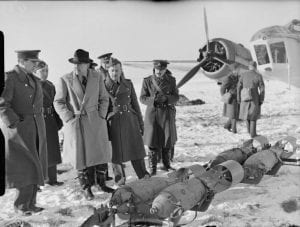
Harold Balfour questions Air Commodore before mission in France https://en.wikipedia.org/wiki/Harold_Balfour,_1st_Baron_Balfour_of_Inchrye#/media/File:Royal_Air_Force-_France,_1939-1940._C337.jpg
Many of the politicians instrumental in the establishment of a commercial airport at land at the rural hamlet of ‘Heath Row’ had a history of RAF service and played key roles in war ministries of World War II, including Harold Balfour and Air Marshal Sir John D’Albiac, first commandant of London Airport.
Whilst crowds were celebrating the end of the brutal conflict inflicted during World War II on Tuesday May 8th 1945, the government were already putting plans in motion for the development of Heathrow Airport, the UK’s global travel hub. Commercial air travel was identified as a key factor in restoring foreign relations and re-establishing trade links between Britain and the rest of the world following a turbulent five years of war time. Professor Patrick Abercrombe masterminded the 1944 Greater London Plan to rebuild London which featured Heathrow as an option for a commercial airport West of London, as part of a ring of airports situated outside the London area. Abercrombe believed London may need as many as ten airports to serve a variety of continental and intercontinental destinations, however also advocated for one single large airport capable of handling a higher volume of traffic to and from a greater number of global destinations. Fifty two sites were considered however the most favourable option was land within the Hamlet of ‘Heath Row’ which was 12 miles west of London and free from the industrial smog of the East, had good drainage qualities and already had transport links via the nearby Great West Road which was opened in 1925.

Great West Aerodrome (also known as Heath Row Aerodrome), 1936
Richard Fairey had already developed the Great West Aerodrome on land at Heath Row which was used as a base to test aircraft constructed by Fairey Aviation Company Limited at their nearby factory in Hayes. Around the same time that Abercrombie was developing his Greater London Plan, Harold Balfour was Under Secretary of State for Air and had been watching Richard Fairey’s Great West Aerodrome at Heath Row with interest. He recognised the surrounding land as ideal for a commercial airport for London.
In order to stop red tape preventing the acquisition of this land for the airport, Balfour was in favour of using emergency powers to acquire Fairey’s aerodrome and the surrounding area. So in 1944 the government requisitioned the Great West Aerodrome and surrounding land at Heath Row to create an RAF base designated for the transportation of troops and supplies to long haul destinations in the Far East. There was of course opposition due to the loss of high quality agricultural land in the area as well as the loss of opportunities for future housing schemes identified for the area. With Fairey now out of the way, Balfour could begin planning London’s commercial airport with PM Winston Churchill having created a new separate Civil Aviation Ministry. After Labour toppled the conservatives to win office in 1945 the new Aviation Minister, Lord Winster, announced that the intended RAF base at Heathrow would instead be used as a civilian airport for London and the first flight took off from London Airport on New Years day 1946. The Airport was not officially open until May later that same year (see link for video recording: https://www.britishpathe.com/video/civil-flying-starts-again).
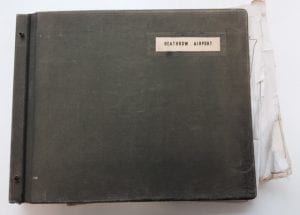
Heathrow Air Ministry Property Record (ref: UWLA/HA/01/02/001), exterior cover
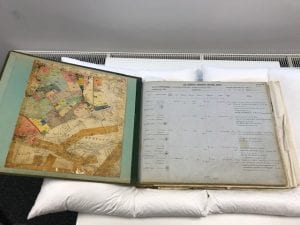
Heathrow Air Ministry Property Record (ref: UWLA/HA/01/02/001)
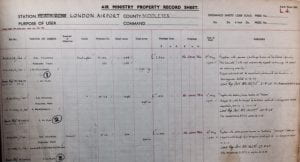
Heathrow Air Ministry Property Record (ref: UWLA/HA/01/02/001) opening page, showing 1st transaction as 3rd May 1945
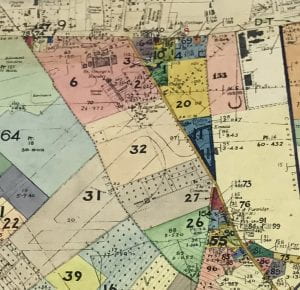
Corresponding map, mid-green coloured area with mumber ‘1’ shows area referred to in 1st transaction
The Heathrow Archive holds a number of interesting documents relating to the history of Heathrow Airport and the development of aviation in general. In May 1945 the Civil Air Ministry began keeping records of transactions of land acquired for the initial development of London Airport. The records were recorded within the Heathrow Air Ministry Property Record (ref: UWLA/HA/01/02/001) which provides details on these transactions and show exactly where the land was situated on accompanying annotated Ordnance Survey maps of the local area. The document provides an interesting insight into the initial expansion of Heathrow Airport and also shows that the process of acquiring land to be used in the development of the commercial airport was taking place before war had officially been declared over on Thursday 3rd May 1945 (the next transaction was recorded on 12th May 1945 – I hope this means here was a pause in records while the country celebrated in style following VE day on Tuesday 8th May, including Ministry of Civil Aviation staff). The expansion and development of the Airport has continued at a significant rate, creating the global travel hub which Heathrow is today.
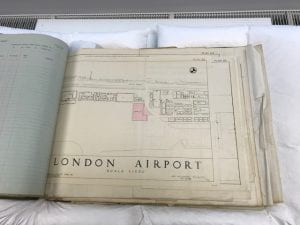
1955 plans of London Airport terminal buildings
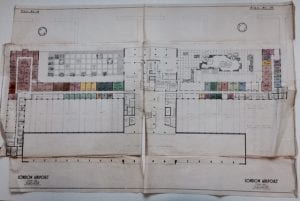
1955 plans of London Airport terminal buildings
The document also features a number of interesting plans from the initial development of permanent terminal buildings within the Central Terminal Area from 1955. The Heathrow Airport property record is currently in the process of being conserved and digitised.
UWL Archives is currently closed, however for information on any of the documents or references mentioned please see the web pages:
https://www.uwl.ac.uk/library/library-services/university-west-london-archive
The Heathrow Exhibition is also closed until further notice:
https://www.uwl.ac.uk/study/hospitality-tourism/heathrow-exhibition
Sources:
Gallop, Alan, Heathrow Airport: Yesterday, Today and Tomorrow (Yorkshire: Pen and Sword Aviation, 2019)
Sherwood, Phllip, Heathrow: 2000 years in the making (Gloucestershire: The History Press, 2001)
